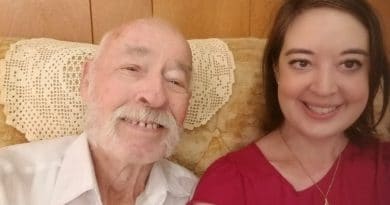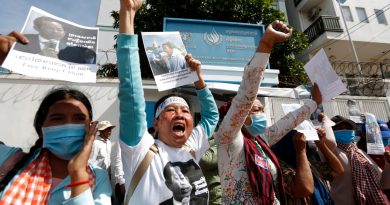Lake Alice report finally documents the truth
Taken By The State
The Royal Commission report on the Lake Alice adolescent unit was released today. Aaron Smale takes a first look.
Comment: More than 50 years after children started being dumped at Lake Alice psychiatric hospital, a report by a Royal Commission of Inquiry has finally documented what those children went through and how the Crown responded to their systemic torture and abuse.
The report documents not only the abuse that happened at the Lake Alice adolescent unit in the 1970s but also the succession of failures by a multitude of authorities to investigate the perpetrators and hold them accountable.
READ MORE:
* Lake Alice victims file police complaint
* Official reviewing OT involved in failure to investigate Lake Alice
The first part of the report details the abuse and failures to stop it. The report says:
“In the almost eight years the unit operated, Dr [Selwyn] Leeks and the staff at Lake Alice inflicted, or oversaw, serious abuse – some amounting to torture – in what quickly became a culture of mistreatment, physical violence, sexual and emotional abuse, neglect, threats, degradation and other forms of humiliation.
“The torture survivors experienced included electric shocks, often without anaesthetic, applied not just to the temples but to the limbs, torso and genitals. They were given excruciatingly painful and immobilising injections of paraldehyde, administered by staff as punishment or as an improper form of aversion therapy, not for legitimate medical reasons. Children and young people were held in solitary confinement and deprived of their liberty, sometimes for days and weeks on end.”
“Dr Leeks wielded almost unbridled power over the nurses and staff at Lake Alice some of whom, in turn, misused their power against the children and young people in their care. There was a culture of impunity that enabled and normalised acts of abuse and torture. Sexual, physical, cultural and emotional abuse was widespread and unchecked in the unit.
There are a couple things to note here – firstly, the Royal Commission names what happened at Lake Alice as torture. This might seem obvious to anyone who knows even the most vague details of Lake Alice but this has major significance legally when considering things like redress. The use of the word “torture” by a Royal Commission carries a weight that will now have major implications for how the Government responds, including the police. Previous governments have been reluctant to call it anything that might create a legal or financial liability and have gone out of their way to avoid using such terms. The word torture is now permanently and officially part of the Lake Alice vocabulary.
Secondly, the survivors had to dredge up their trauma for the umpteenth time, as they have for numerous institutions, media, police inquiries, etc etc, for the past four decades. And it has got them nowhere. For many it has simply caused more distress as they have dealt with people and institutions who have responded by trying to deny or suppress the truth. This report now at the very least puts the events that created that trauma on the official record. Finally, the reality of what survivors have been through has been validated in a significant way.
But the fact it has taken so long to get to this point raises its own set of questions.
The report goes a long way to answering those questions. But for all the powers the Royal Commission has, it has been careful to qualify what it can and can’t do.
“Like all inquiries, this Royal Commission does not have the power to make findings of criminal or civil liability — only the courts can do that. But from the earliest days there was evidence to justify criminal charges against Lake Alice staff, and our investigation has highlighted failings in the police investigations in the 1970s and 2000s. It is wrong that no one has ever been held accountable and that survivors are still waiting for justice. The story of the Lake Alice child and adolescent unit is a shameful chapter in the history of Aotearoa New Zealand.”
There is a lot in that statement. The commission makes clear it can’t make findings of criminal or civil liability, but then states quite clearly that there has always been evidence of criminality that justified criminal charges. The police reached the same conclusion when they finally did their job last year. Solicitor General Una Jagose told the Royal Commission “the evidence was right there in the file” all along. This begs the question: if this evidence has always existed, then why was it not acted on?
The most clear answer to this is in a ministerial briefing by Dr Ron Paterson, a MoH official, on October 15, 1997.
Paterson said that: “The purpose of the paper is to provide advice on how to minimise the legal and fiscal risks posed to the Crown arising out of the alleged mistreatment of patients in the adolescent unit at Lake Alice Hospital by employees of the Department of Health (the Department) and Palmerston North Hospital Board (the Board).”
Already the dishonesty was creeping into the documents. These were not merely allegations. The government officials writing these briefings knew there was evidence that not only corroborated the allegations but proved them to a level where they should have been put in front of the police. But a long list of people did not provide this evidence to the police because there was an overriding fear of exposure to liability.
In its executive summary the commission names a number of state and quasi-state institutions that failed in their job. It would be easier to list institutions that weren’t involved. The report says: “The institutions and entities called upon to act included the Ombudsman, a commission of inquiry, NZ Police, the Medical Association, the Medical Council, the New Zealand branch of the Royal Australian and New Zealand College of Psychiatrists, the Department of Health, the Department of Education, the Department of Social Welfare, Cabinet, Crown Law, the Health and Disability Commissioner and ACC. Despite all these attempts, the perpetrators were not held to account.”
Take a couple of those institutions as examples, Crown Law and Cabinet. Those are two of the most powerful institutions in the Crown. They are headed by the Prime Minister and the Attorney-General with a large role played by the Solicitor-General. The report shows that there was a widespread awareness about the allegations and the evidence that backed those allegations up. But for decades the perpetrators were never held to account.
There are glimpses in the report showing the knowledge of a number of people making the decisions, but decisions are often attributed to the institutions rather than digging into the details of who did what and why. There is detail and names but it is uneven – some officials are named for their part while some of the higher-level decisions and who made them is missing. I’ve named individuals in my reporting with far less evidence than the Royal Commission has access to.
There may be legal reasons for this. The formal processes and protocols of the Royal Commission means the Crown agents who failed are given the benefit of due process. But due process is something that has never been offered to the victims previously.
However, putting this to one side, the report is more than 400 pages and so thorough it is hard to take in and will need to be revisited as time allows for the meticulous details to be absorbed and processed.
The commission’s report mentions the “culture of impunity that enabled and normalised acts of abuse and torture. Sexual, physical, cultural and emotional abuse was widespread and unchecked in the unit.” This statement about a culture of impunity regarding Lake Alice could be extended to the actions of various individuals who have been involved in the Crown’s response to Lake Alice. There has simply never been any accountability for how badly some of those acting on behalf of the Crown have treated victims of Lake Alice.
Take one example – the government’s response to the UN calling on New Zealand to carry out a proper investigation, which it was obligated to do as a signatory to the UN’s Convention Against Torture
In 2012: “United Nations special rapporteur, Ms Felice Gaer, wrote to the government saying the committee was concerned there had been no “prompt, impartial and effective investigation into all claims of abuse” at Lake Alice and no prosecution of “alleged perpetrators of the torture and ill-treatment perpetrated there”.
“Ms Gaer asked the government to clarify whether it intended to conduct an “investigation into the nearly 200 allegations of torture and ill-treatment against minors at Lake Alice, to criminally prosecute individuals found to have perpetrated this abuse, and to punish such perpetrators”.
“She also asked whether the government intended looking at the adequacy of the NZ Police investigation, including complaints that NZ Police had failed to interview many survivors, and whether it planned to reopen the investigation.”
The New Zealand government responded saying: “NZ Police acted independently and anyone alleging misconduct about a NZ Police investigation could go to the Independent Police Conduct Authority. It is said it did “not propose undertaking any further review.”
These statements completely fall apart under the Royal Commission’s scrutiny. The police had not investigated sexual abuse and rape allegations, let alone the allegations of torture. In fact they’d only spoken to one of the nearly 40 victims who’d lodged complaints with the police. How can it be that such sloppy and inaccurate statements can be put in front of the UN by the New Zealand government on an issue regarding the torture of children by employees of the state? The people involved in that debacle are high up in government agencies today.
The commission report goes on to point out that Attorney-General Chris Finlayson had acknowledged to lawyer Sonja Cooper in a letter in 2009 that the Lake Alice allegations had been “verified” and that Leeks had used the ECT machine in ways that was “indefensible even for its time”.
Despite this there was never any thorough inquiry to establish the facts of what happened at Lake Alice before the Royal Commission. These kinds of tantalising details are sometimes left hanging and beg further questions – so if the Attorney-General knew this then he must have told the Prime Minister. The previous government presumably knew too, so what did they do about it. And so on, and on. Many of the report’s findings have implications that are far wider than the case of Lake Alice. If you have government agencies failing in such catastrophic ways, what are the consequences for those failures?
There’s an overwhelming list of scandals and failures documented in this report that will take a long time to tease out. If this hadn’t been dropped in the news dead zone of the week before Christmas this report could have dominated headlines for days if not weeks. Was this timing a deliberate and cynical move by the Government? The UN decision that New Zealand was in breach of the Convention Against Torture in 2019 was one that the UN told the government should be widely publicised. It was buried on the police website. The Royal Commission’s hearings on Lake Alice were somewhat overwhelmed by coverage of the government’s apology for the dawn raids, an apology that could have been made any week of the year.
And now the Royal Commission’s report is dumped as everyone is checked out for Christmas at the end of an exhausting year. It seems too coincidental and consistent with the attempts, subtle and otherwise, of previous governments to bury Lake Alice.
For victims, the news cycle is somewhat irrelevant. They’ve waited more than 50 years to be believed and for the truth to be told about what happened to them. But now that what happened at Lake Alice is finally on the official record, justice is still waiting.
Some of the victims are ambivalent about the findings of the report – pleased that what happened to them has now been documented, but wondering why it has taken so long and who, if anyone, will be held accountable for the multitudes of failings. Those failings are not just about what happened in Lake Alice but in the decades that have followed.
Leoni McInroe fought the Crown over nine years of civil litigation and is pleased to finally see what happened to her and hundreds of others recognised.
“This is the path that we walked and travelled. That place (Lake Alice) has now been placed on the map of Aotearoa and documented and revealed. I thought that would never happen in my lifetime. But it puts it out there in a way that is painful. Here it is in all of its horror. That’s validating but it’s also hurtful.
“But those who hid this, for what purpose? It is now recognised as torture but they refused to take responsibility. The Crown has been relentless in suppressing this.”
Tyrone Marks says the report means the Crown can no longer deny what happened as they’ve done for years.
“There’s no out clause for the Crown anymore. They can’t dispute anything anymore. That has to be good in itself.”
“The word torture has been used. It’s not just torture, it’s torture of children. It can’t be anything less than torture. New Zealand always denied it was torture; they can’t deny that anymore.”
Marks is one of five survivors who have laid a complaint with the police about conspiring to defeat the course of justice.
“In terms of the police complaint this backs this right up.”
Rangi Wickliffe says his first impression of the report is the word failure.
“The word failure is paramount throughout the report. It’s in every paragraph, fail, fail, fail.
“They diagnosed me a sociopath and I’m stuck with that for the rest of my life. We come to this report and they’re the liars.”
Wickliffe says the report leaves out certain details.
“They’ve done the best they can but they’ve left out things, like sodomy and rape. They’ve mentioned torture but they’ve left out details like parts of the body and what happened.”
McInroe says successive governments have used the legal system to inflict more trauma on top of the abuse that happened at Lake Alice. She considers the litigation process another form of abuse that was perpetrated by those who had proof that her claims about Lake Alice were true.
“It doesn’t matter which government it was in power, there were people that instructed these steps to be taken and they should not be protected. They’re as bad as Dr Leeks.
“The report has named what I knew was happening. It’s like a child being abused, they don’t have the ability to articulate what is happening. I knew I was being abused but didn’t understand the government strategy. I didn’t understand the motivation for them brutalising me but I knew they were brutalising me.
“This report has documented that. Okay, what now?”






